The future of the UK's top design college in this age of disruption
The next generation of car designers will need a fresh skill set. The Royal College of Art is already on the case
The car industry is at a once-in-a-generation crossroads thanks to autonomous driving, electric powertrains and car sharing all battling to shake up the century-old industry. Imagine the challenges facing car designers.
In such a context, perhaps it’s no surprise the world-renowned car design course at the Royal College of Art (RCA) is changing fundamentally.
In March, the first intake of students to graduate from the new ‘Intelligent Mobility’ course displayed their final-year design projects. Among the 21 projects, there were a handful of swooping dream cars, but the bulk of designs were far from conventional. Instead, there were autonomous pods inspired by art installations, an electric supercar designed to dart through Elon Musk’s Hyperloop tunnels, an amphibious machine to cope with global warming floods and a future Bentley car interior shaped around a relaxation sound system.
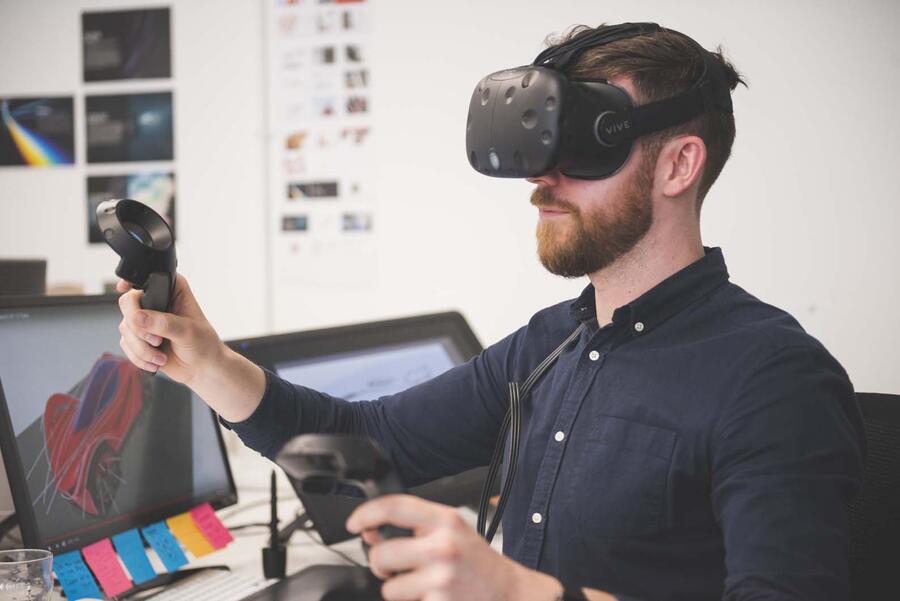
“Our job is twofold,” says Professor Dale Harrow, director of the Intelligent Mobility Design programme. “To give the students the kind of vocational skills to practise in the work environment, but secondly to balance that by testing students with things they will meet in the future. Things like sustainability, electric cars, autonomous driving, screen-based user interfaces and the move to a service-based ownership model. These are all challenges the students now have to prepare for.”
Harrow has been a lecturer in car design at the RCA for two decades, including five years recently as dean of the design school with fashion, research and textiles responsibility. Now he’s returned to his main passion of designing cars, putting the course back on a solid footing with a more healthy balance of funding and creativity, after a few wobbles mid-decade.
Reflecting the new direction are staff drawn from a wider context than car makers’ studios. Harrow’s deputy director is Cyril Diels, whose background includes work on driver behaviour and a bilious PhD in car sickness, while acting head of programme Dr Chris Thorpe has an MA in furniture design but is ex-Qinetiq, the defence contractor. Three permanent tutors bring studio experience from Ford, Mercedes, Opel, Volvo and VW.
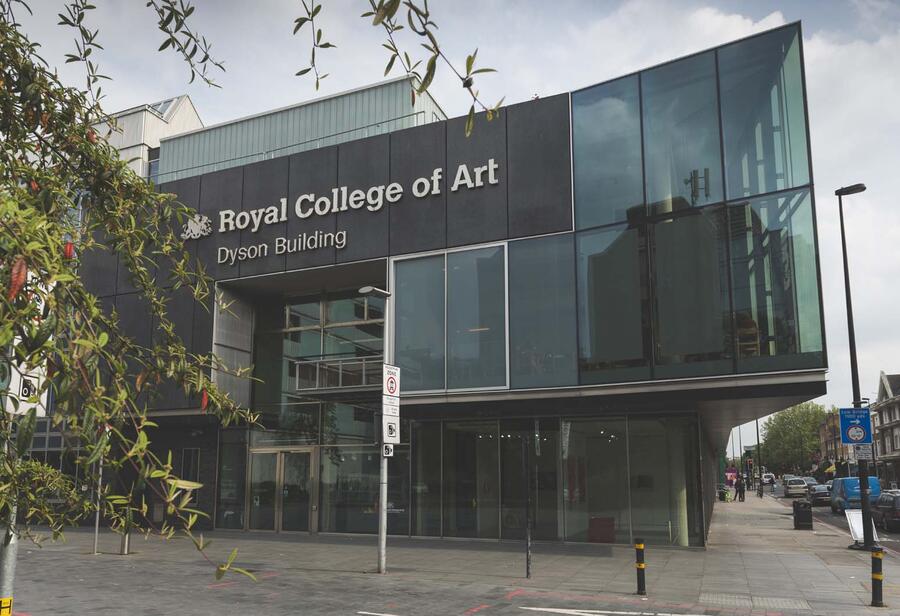
Today, the staff operate out of the same warren-like building in London’s Kensington that the department has occupied for decades, but a significant expansion is coming in 2021/22 with a move to Battersea, where a new studio is being developed alongside existing RCA buildings. Symbolically, new premises will also coincide with a major new trend in car design as Harrow believes brand, which has pushed car design trends for at least 25 years, is losing its influence.
“The brand personified by form and shape, visual language and identity, I believe, is on the wane,” he says. “The challenges are the next big stages in autonomy and issues like young people not buying cars.” The RCA transformation has also been fostered by the heads of car maker design studios, who need new skills to maintain their own cutting edge. Many studio chiefs are ex-RCA and retain close links, through sponsoring students and supporting project work.
As design moves in a new direction, Harrow says there is special interest from studios for UX (user experience) interface designers, so there’s a new focus on that discipline, taught by visiting lecturer Joe Simpson.
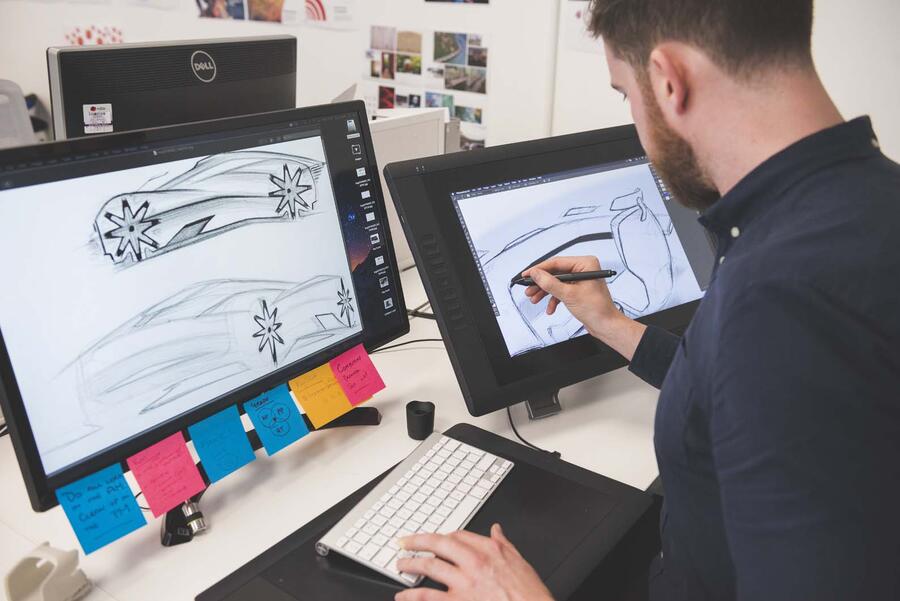
One of the aims is to equip designers with the technical knowledge of touchscreens and programming languages so they can work with engineers to make the best of the full-width cabin displays coming to the next generation of electric and autonomous cars. “The danger is technologists push the designs and they end up being highly unusable and frustrating. Designers can demystify the use, just like Apple did in computing,” says Thorpe.
Despite the change in focus, Intelligent Mobility remains a postgraduate degree, culminating in an MA, which means most of the students are in their early to mid-twenties. Courses average around 30 students.
But a significant change is a cut from 24 months’ study to 15, by reducing holidays. As a result, total costs are down, since students spend less on pricey London digs. For UK students, the fee is £14,500 (Rs 12 lakh), while overseas students pay £34,000 (Ra 29 lakh). The recent trend for the bulk of scholars to come from overseas continues, with China, Korea and India well represented. There’s also growing interest from female students, who make up about 10 percent of the intake.
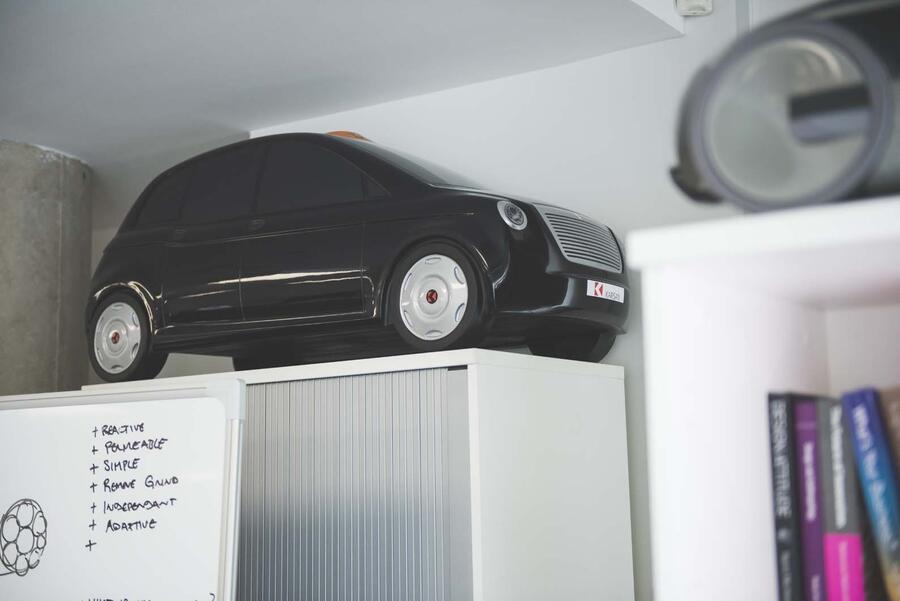
Harrow and Thorpe are also nudging the course into a new, more socially aware direction in which cars are viewed in the context of their built environment and societal use. “In the old days, you put design together with engineering and you got innovation. Dyson is an example of that: how to get a better vacuum cleaner,” says Harrow. “But now you need a social element because design sits between social and engineering. An example would be a successful design solution for London that’s not the same as one for Paris.”
During the course, such new challenges are tackled in a number of month-long study modules, plus two mini-design projects, which in 2018 included a collaboration with Bentley called ‘What will British luxury mean in 2050?’, and an annual project in conjunction with the RAC Foundation, last year based on ‘Ageless mobility’.
The Bentley coursework sparked several final-year project designs, including an interiors project called ‘Luxury soundscapes’ by Irene Chiu that explored beneficial health and well-being effects of in-cabin acoustics in autonomous vehicles. “That was a project away from the usual disciplines of exterior and interior car design and a good illustration of Intelligent Mobility,” says Thorpe.
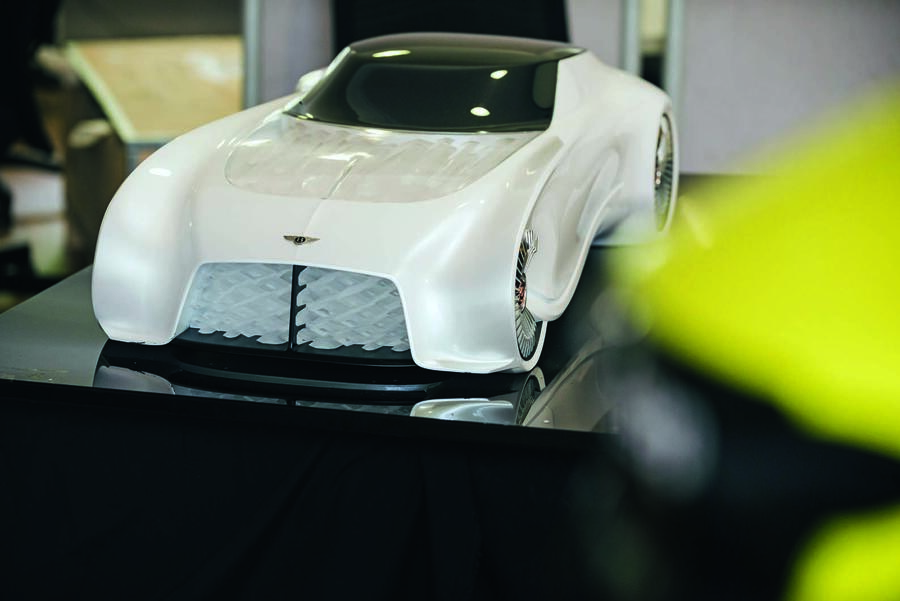
The RCA HQ in Kensington, when visited by Autocar UK team, the studio is buzzing with industrious students sketching and rendering on screen, while the walls and shelves are festooned with design prints and scale models.
Remarkably, the RCA doesn’t teach car rendering and sketching any more, partly because there are so many online ‘how to’ videos that Harrow and Thorpe consider the discipline a fundamental that students have already grasped.
Reassuringly, most students still arrive at the RCA with a passion for cars, but the postgrad task is to open their minds to new disciplines. “We don’t want to lose that emotional context and many come here with a strong sense of the car as a ‘form’. But it’s making sure there’s a bolt-on of the other things,” says Thorpe.
A new motivation for the students is the emergence of tech companies moving into mobility, such as Google. This also creates competition for car makers to attract the best design talent. “Students see Google and a big manufacturer like Ford in the same space and the opportunity to work at Google on mobility solutions instead of Ford is exciting for them,” says Thorpe.
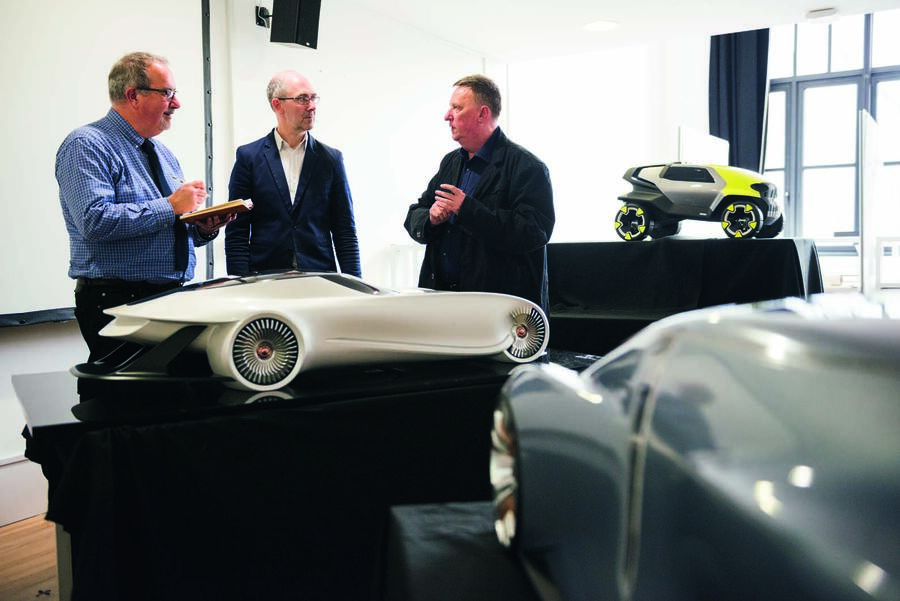
Of course, many students still move to car makers on graduation, but there’s an emerging trend to use project work to develop a commercial idea to be exploited themselves, supported by crowdfunding and encouraged by the success of startups in China and Silicon Valley.
That’s quite a change from the days when a car designer’s dream job lay in a car maker’s design studio, starting out in the door handle department before progressing through a 30-year career in Coventry, Detroit or Wolfsburg. But the world is changing fast and the RCA’s car design education is moving with it.
Intelligent mobility: on the move
In just over two years, students of Intelligent Mobility will study in a brand-new £108 million four-storey campus in Battersea, London, just a stone’s throw from the River Thames.
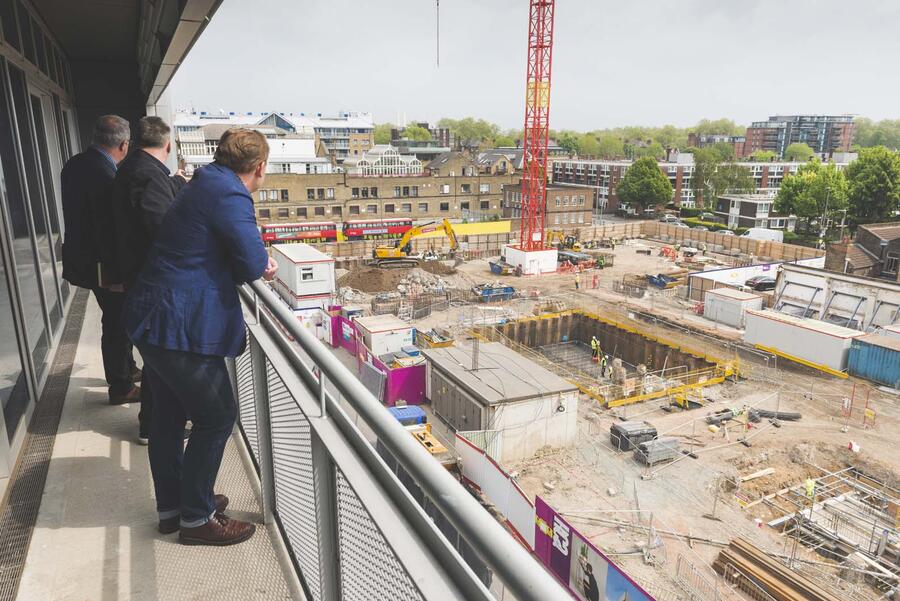
Right now, the site is a hive of construction activity and looks nothing more than a complex hole in the ground, but RCA Intelligent Mobility director Dale Harrow and his deputy Cyril Diels can’t wait to move into the purpose-built space, which is likely to treble the area they have for teaching and research. It is going to make a huge difference, they say.
Harrow is confident that Intelligent Mobility will occupy part of the ground floor where an open-plan, double-height volume will make possible the display of a full-sized car, something that could only be dreamed of at the enclosed current Kensington site.

Diels is already based in Battersea, at the RCA’s second site, which opened in the mid-1990s and now houses the Intelligent Mobility Design Centre, where it runs PhD courses, and the Hyundai Kia Innovation Laboratory, a think-tank for future mobility, which opened in 2016. Harrow hopes to attract three or more car makers to open design labs once the new building is complete. Jewellery, ceramics and glass design are also run out of Battersea in the James Dyson Building.
The new brick-and-glass-facaded campus is designed by Herzog & de Meuron and will offer 15,500 square metres of space, enough to launch 10 new courses. Planning permission was granted in early 2018 and, if all goes to plan, it will open in autumn 2021.
RELATED ARTICLES
Renault India's Quiet Fixer
As the head of Renault India, Francisco Hidalgo Marques faces his biggest challenge yet.
Tesla’s Test
Unlike in other markets, Tesla has taken a long-game approach in India, focusing on creating the infrastructure first.
‘India’s E20 Strategy Is the Template Europe Now Needs’
Mahle CEO Arnd Franz believes India’s flex-fuel shift is proving more resilient and market-aligned than the EU’s all-ele...






 09 Jul 2019
09 Jul 2019
 21144 Views
21144 Views


































 Ketan Thakkar
Ketan Thakkar




